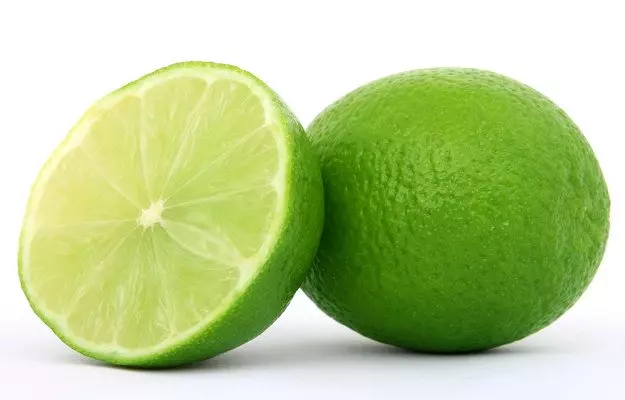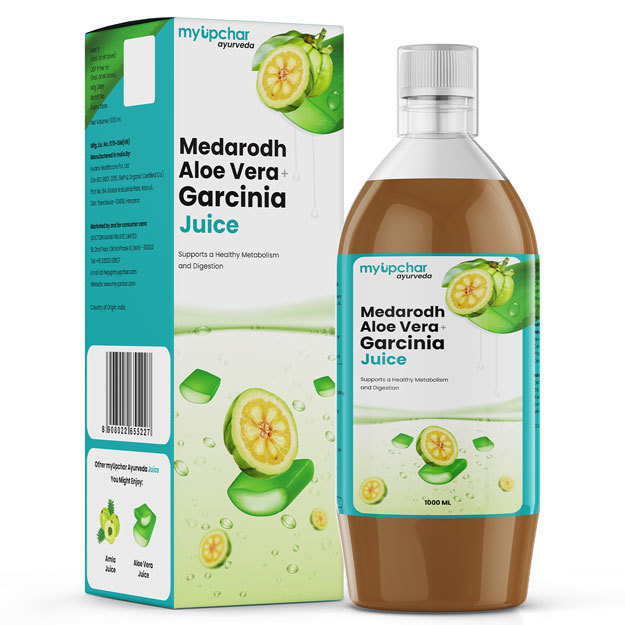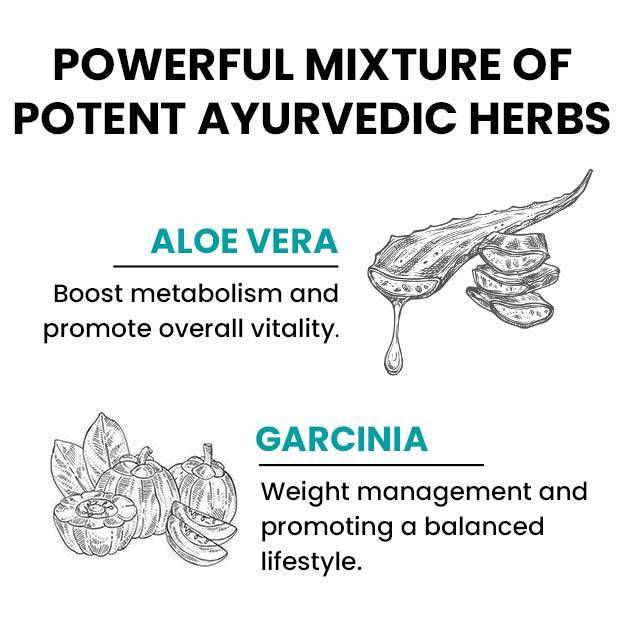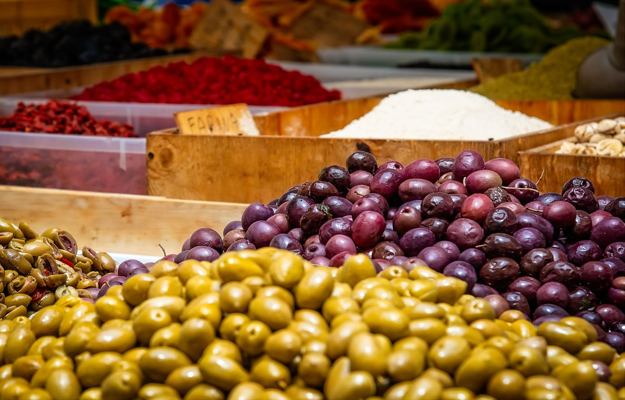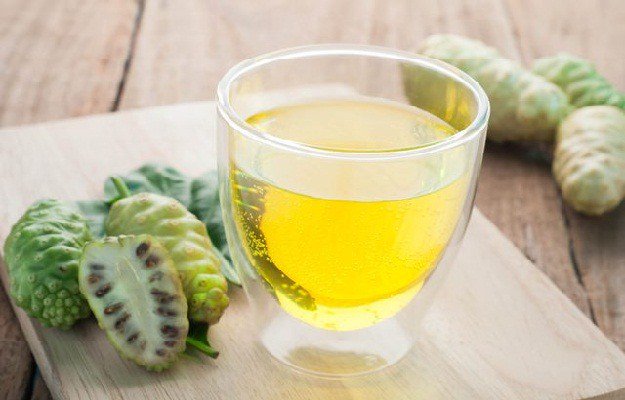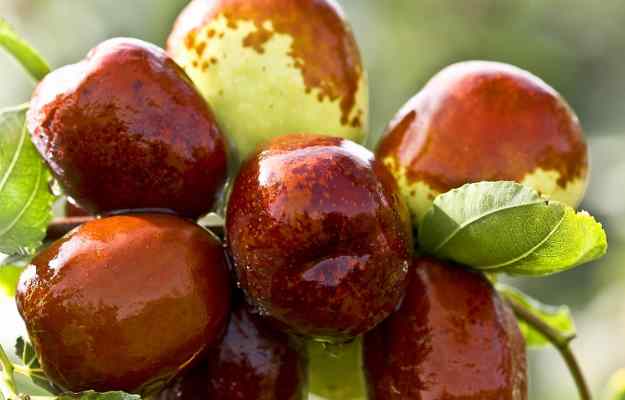You might have heard of the phrase, ‘When life gives you lemons, make Lemonade.’ But what if life gives you sweet lime instead? Make fresh and healthy sweet lime juice and drink it. Sweet lime is commonly known as "Mosambi" in Hindi, in French it is known as "Limettier doux"; "Quit giây" in Vietnam; "Lima dulce" in Spanish; "Battayi pandu" in Telugu, "Cattukkuti" in Tamil, "Madhura naranga" in Malayalam, and "Mosambi" in Gujarati.
The origin of sweet lime can be traced to various parts of the world including Indonesia and China, but it was later referred to as ‘Native to India.’ It was mentioned in a report published in the Agriculture Review (2004) that the origin of Mosambi belongs to the hills of Meghalaya and Nagaland. It is one of the most popular fruits in India and is found in plenty in the months of July and August. They grow on trees which take about 5-7 years to yield fruit and are mainly found in the tropical and subtropical regions. This fruit is often confused for lime and lemon as it is a cross-breed of the two. Lime and lemon also belong to the same background and are a family of citrus fruits and have similar nutritional properties. The difference can be seen in their appearances as well.
They usually look like lemons but are bigger in size and sweeter in taste. They taste somewhat just like an orange. This fruit is rich in vitamins, especially vitamin B9 and vitamin C.
Basic facts about sweet lime
- Botanical name: Citrus limetta
- Family: Citrus Fruit, Rutaceae
- Common Name: Sweet Lime, Mosambi
- Sanskrit name: Jambiram
- Parts used: Skin, pulp, and seeds
- Native region and geographical distribution: It is believed to have originated from Indonesia and China, and also in India’s central and northern regions. Today, Egypt, Syria, Palestine, tropical America, parts of Southeast Asia, and the Mediterranean are also growing sweet lime. It is also a preferred fruit in parts of Florida and California.
- Interesting fact: On his second voyage in 1493, Christopher Columbus took citrus seeds, probably limes, to the West Indies and the seeds were disseminated widely in the West Indies, Mexico, and Florida.
- Nutritional facts of sweet lime
-
Health benefits of sweet lime
- Sweet lime for a healthy skin
- Sweet lime for digestion
- Sweet lime for detox
- Sweet lime for weight loss
- Sweet lime for immunity
- Sweet lime for split-ends
- Sweet lime for scurvy
- Sweet lime for jaundice
- Sweet lime for stomach ulcers
- Sweet lime for sickle-cell anaemia
- Sweet lime for arthritis
- Sweet lime prevents cancer
- Side effects of sweet lime
- FAQ
- Takeaway
Nutritional facts of sweet lime
Sweet limes work wonders for a low calorie and low-fat diet. Small amounts of servings of this fruit provide around 43 calories and consist of only 0.3 grams of fat. They are also a rich source of potassium and vitamin C which offers benefits medically and cools the body. They contain carbohydrates as well which is a major source of the calorie in sweet lime.
As per USDA Nutrient Database, 100g of raw lime juice is as follows:
|
Nutrient |
|
|
Water |
90.79 g |
|
Energy |
25 g |
|
0.42 g |
|
|
Fat |
0.07 g |
|
Carbohydrate |
8.42 g |
|
0.4 g |
|
|
Sugars |
1.69 g |
|
Minerals |
|
|
14 mg |
|
|
Iron |
0.09 mg |
|
Magnesium |
8 mg |
|
Phosphorus |
14 mg |
|
Potassium |
117 mg |
|
Sodium |
2 mg |
|
Zinc |
0.08 mg |
|
Vitamins |
|
|
Vitamin B1 |
0.025 mg |
|
Vitamin B2 |
0.015 mg |
|
Vitamin B3 |
0.142 mg |
|
Vitamin B6 |
0.038 mg |
|
Vitamin B9 |
10 µg |
|
Vitamin C |
30.0 mg |
|
2 µg |
|
|
0.22 mg |
|
|
Vitamin K |
0.6 µg |
(Read more - Vitamin B benefits and sources)
Health benefits of sweet lime
Sweet lime is a nutrionaly rich fruit that is low in calories and fat content. But one of the most important benefits of sweet lime is its high vitamin C contents. The vitamin C present in sweet lime not only helps in preventing infections and diseases but also it is helpful in improving various skin conditions such as acne and blackheads. Let us explore some of the well-known and scientifically proven health benefits of this sweet and sour fruit.
- Improves digestion: Mausambi fruit has several benefits for your digestive system. It promotes digestion process and relieves indigestion, stimulates the release of bile from liver and helps control nausea and vomiting. Sweet lime also facilitates easy passage of stools from intestine thereby relieving constipation.
- Improves skin health: Sweet lime juice is rich in vitamin C and antioxidant compounds, which help improve skin tone and elasticity. It also mitigates dry skin problems and helps delay some of the early signs of ageing such as dark spots and wrinkles.
- Detoxifies the body: Sweet lime is a well-known detoxifying agent. Not only does it promote the expulsion of dietary wastes but also it is loaded with bioactive components that reduce the free radical content in your body, thereby promoting overall health.
- Boosts immunity: Being a rich source of vitamin C, sweet lime is one of the best immunity-boosting foods. It stimulates the production of immune system cells and helps improve skin barrier function thus helping prevent common infections.
- Promotes weight loss: The high antioxidant content of sweet lime combined with its hydrating effects and a low calorie content makes it an excellent addition to any weight loss diet. You can eat a sweet lime daily to reap maximum benefits from this fruit.
Sweet lime for a healthy skin
Sweet lime is a girl’s best friend as it does miracles not only for hair but also helps in getting healthier skin. Due to the presence of vitamin C and antioxidants, the sweet lime juice is being used in many skin care products as well as medicines. It moisturizes the rough and dry skin and makes it look healthy. It also works better for the complexion. Vitamin C not only provides glowing skin but also reduces the blemishes, acne and dark spots in it. It is used for treating sweat and body odour. It cleanses the blood, and hence various skin problems are relieved. Applying "mosambi" juice helps to get rid of chapped lips. (Read more - Home remedies for pigmentation)
Sweet lime for digestion
Consumption of fresh "mosambi" can result in the treatment of gastrointestinal problems such as constipation and indigestion. The richness of fibre in the fruit keeps the small intestines healthy. The presence of flavonoids leads to an increase in the secretion of digestive juices, bile and acid that activates the digestive system. Sweet lime juice is highly recommended for indigestion as it stimulates the salivary glands into the secretion of enzymes and increases bowel movements as well which leads to proper digestion. "Mosambi" also helps in controlling diarrhoea, nausea and vomiting.
Sweet lime for detox
Sweet lime juice is a natural and the ultimate source for detoxification of the body. The presence of antioxidants, flavonoids, and carotenoids in "mosambi" act as perfect detoxifying agents and help to get rid of wastes and toxins in the body. "Mosambi" juice neutralises the harmful effects of stress and pollution and keeps the body energetic. It is rich in fibre and helps in preventing constipation remove the toxins in the bowel tract.
Sweet lime for weight loss
This low-calorie fruit works as a weight loss agent. The consumption of "mosambi" juice not only helps in shedding off those extra kilos but is also a healthy drink to quench the thirst. Sweet lime has very few calories in it and its consumption can also kill the hunger pangs. Extra calories can be burnt by drinking a glass of sweet lime juice with honey.
Are you also troubled by obesity and are not able to lose weight even after a lot of efforts, then start using myUpchar Ayurveda Medarodh Weight Control Tablet today and control your weight.
Sweet lime for immunity
Having sweet lime or its juice strengthens the immune system as it is loaded with vitamin C as well as antioxidants. It purifies the blood and helps in proper blood circulation in the body. This is a major boost to the immune system. It results in a reduction in inflammation and also prevents infections. Everyone encounters a common cold. Vitamin C is an excellent remedy for it. Since sweet limes are enriched with it, having them regularly helps to develop immunity against bacteria and viruses.
Sweet lime for split-ends
Sweet lime has become one of the most popular assets in the personal care industry. The extracts of the fruit are used in a lot of hair products like shampoos, masks and even medicines. It helps in reducing dandruff and hair fall. Also, it works wonders on split ends. Besides these, it also helps the hair to grow faster. Many industries have understood the benefits of citrus based products and have included them in the production of oils, hair masks and shampoos.
Sweet lime for scurvy
Sweet lime, as we all know is highly rich in vitamin C which is very important for the cure of a disease called scurvy. Scurvy is a disease which is very rare and is caused by a deficiency of vitamin C. Few symptoms of this disease are swollen gums, ulcers in the mouth as well as on the tongue, chapped lips, bruises, rashes, flu-like symptoms, etc. Sweet lime not only provides vitamin C but also helps to stop bleeding of the gums. It also prevents bad breath. (Read more - Mouth ulcers causes and treatment)
Sweet lime for jaundice
Mosambi juice is highly recommended by the doctors when a person is suffering from jaundice. Since it contains a lot of minerals and vitamins, it helps in treating jaundice in adults. It boosts up the functioning of the liver and ensures better digestion.
Sweet lime for stomach ulcers
The development of sores in the lining of the stomach, the upper part of the small intestine or lower oesophagus is known as peptic ulcers. Sweet lime has antioxidant and antibiotic properties owing to the presence of flavonoids, carotenoids, and essential oils. These compounds inhibit the process by which Helicobacter pylori (peptic ulcer-causing bacteria) is able to survive in the acidic stomach environment. Hence, the consumption of sweet lime helps in eradicating this bacteria, thus preventing the development or relapse of peptic ulcers.
Sweet lime for sickle-cell anaemia
A genetic disease known as sickle cell anaemia affects the red blood cells (RBCs). In this condition, red blood cells become crescent or sickle-shaped and stick to the walls of the blood vessels. As a result, the blood flow and oxygen supply to different parts of the body are reduced leading to the damage of body tissues and severe pain. Studies have found that citrus fruits have an antisickling effect and they prevent the development of abnormal-shaped red blood cells.
In people who have this diseases are also more prone to parasite-born diseases such as malaria. In such a case, the pain usually gets instigated by dehydration, acidosis and fever. According to a recent study, if people with sickle-cell anaemia along with a malarial infection consume sweet lime juice, it helps in killing or clearing the malarial parasites and prevents a further loss of red blood cells.
Sweet lime for arthritis
Sweet lime contains antioxidants, fibre, vitamins, minerals and other nutrients. Some of these nutrients help to lower the inflammation that affects people with arthritis. The major component of sweet lime, vitamin C, helps in preventing inflammation of tissues in the body. Because of its richness in folic acid and vitamin C, it helps in the prevention of osteoarthritis and rheumatoid arthritis. The chronic joint disorder of cartilage is called as osteoarthritis while the autoimmune disease that can cause joint pain is called rheumatoid arthritis.
Sweet lime prevents cancer
Cancer is one of the most hazardous diseases which is on the rise at an alarming rate in recent times. Cancer is a disease which invades the body when there is an uncontrolled growth of cells. One has to go through many tests and treatments for its cure. However, natural remedies are preferred more by people to prevent this dreadful disease. Sweet lime has anticancer agents in the form of limonoids present in it that helps in preventing the abnormal proliferation of cells, thus fighting different types of cancers. Most citrus fruits have hesperidin (a natural bioflavonoid) in them which has a natural cancer-fighting and antioxidant ability. It can prevent breast cancer, colon cancer, lung cancer and liver cancer.
Side effects of sweet lime
- Causes Acidity
Due to the presence of citric acids and vitamin C, the overdose of sweet lime can cause acidity problems in the body. - Direct application of lime or citrus based oil can cause allergy
The skin becomes super sensitive in the sunlight after the application of lime oil. People who have sensitive skins and are allergic to lime oil should be careful while buying skin products that often contain lime oil as one of the ingredients. - Gastroesophageal reflux disorder (GERD)
It is a stomach disorder in which the stomach contents along with acid flow back into the food pipe frequently. Since lime is acidic in nature, an excess of it can trigger your oesophagus and lead to the development or exaggeration of the gastroesophageal reflux disorder. (Read more - Acidity causes and treatment) - Tooth enamel depletion
The citric acid present in the sweet lime can lead to depletion of the tooth enamel (the visible white layer of the teeth). The acids can dissolve enamel and lead to issues like tooth sensitivity and pain. - Be cautious during pregnancy
When a woman is pregnant, she has a weaker immune system and hence is likely to get stomach-related problems. Sweet lime juice can become harmful if it is consumed in excess. It can lead to aches and stomach cramps and can even cause diarrhoea. (Read more - Stomach pain causes and treatment) - Nausea
Although sweet lime can help in motion sickness, if it is consumed in large quantities, it can lead to vomiting and stomach aches. That is because it has vitamin C in it and excessive vitamin C is bound to create problems like nausea.
FAQ
Got questions? Here are the solutions.
Is Sweet Lime Hot Or Cold For The Body?
Mosambi, or Sweet Lime, is generally considered to have a cooling effect on the body. It's a citrus fruit rich in water content and Vitamin C, both of which contribute to its refreshing and hydrating properties. In traditional Indian Ayurvedic practices, citrus fruits are often categorized as having a sheetal (cooling) potency due to their ability to counteract heat and inflammation. Therefore, consuming sweet lime can help in bringing down body temperature and providing relief from heat.
Can I Eat Mosambi At Night?
Yes, you can generally eat Mosambi at night. It's a light and easily digestible fruit. However, like any fruit, moderation is key. Some individuals might find that consuming large quantities of any fruit right before bed can lead to slight acidity or discomfort due to its natural sugars and acids. If you're prone to acid reflux, it might be better to have it a couple of hours before lying down. For most people, a mosambi or a small glass of mosambi juice at night is perfectly fine and can even aid in hydration.
Is Mosambi Juice Good For Fever?
Absolutely! Mosambi juice is an excellent choice when you have a fever. Here's why:
- High Vitamin C Content: Vitamin C is a powerful antioxidant that boosts the immune system, helping your body fight off infections that cause fever.
- Hydration: Fever can lead to dehydration due to increased body temperature and sweating. Mosambi juice is rich in water and electrolytes, helping to replenish lost fluids and maintain hydration.
- Easy to Digest: During a fever, your digestive system might be sensitive. Mosambi juice is light on the stomach and easy to digest, providing essential nutrients without burdening your system.
- Cooling Effect: As discussed earlier, its cooling properties can help in alleviating the feeling of heat associated with fever.
It's often recommended by doctors and home remedies for its beneficial properties during illness.
Can We Add Water To Mosambi Juice?
Yes, you can definitely add water to Mosambi juice. There are several reasons why one might choose to do so:
-
Dilution of Sweetness/Acidity: If the mosambi is very sweet or slightly acidic, adding water can help to balance the taste and make it more palatable, especially for children or those with sensitive stomachs.
-
Increased Hydration: Adding water can further increase the hydrating properties of the juice.
-
Reducing Caloric Intake: For those monitoring their sugar or calorie intake, diluting the juice can be a good option.
-
Extending the Juice: If you have less mosambi but want to make more juice, adding water is a practical solution.
Just ensure the water you add is clean and potable.
Why Is Mosambi Juice Bitter?
Mosambi juice, while generally sweet, can sometimes turn bitter due to several reasons:
- Pith and Seeds: The most common reason for bitterness is the pith (the white spongy layer between the peel and the fruit) and the seeds. These parts contain compounds called limonin and other limonoids, which are highly bitter. When juicing, if these are crushed or left in contact with the juice for too long, they can impart a bitter taste. Using a good juicer that separates the pulp and seeds effectively can minimize this.
- Over-ripeness/Under-ripeness: While less common, very overripe or underripe mosambis can sometimes have an off-flavor, which might include a hint of bitterness.
- Oxidation: Freshly squeezed mosambi juice, if left exposed to air for too long, can start to oxidize. This process can sometimes lead to a slightly altered taste, including a more pronounced bitterness. It's always best to consume mosambi juice immediately after preparation.
- Specific Variety: Though rare, some specific varieties of sweet lime might naturally have a slightly more prominent bitter note.
To avoid bitterness, ensure you remove as much of the pith and all the seeds as possible before juicing, and consume the juice fresh.
Takeaway
Sweet lime has so many wonderful health benefits. It keeps us refreshed and energetic. It may have a few side effects but they are only temporary. This low-calorie fruit has too many health benefits to be overlooked. Always remember that moderation is the key. So, just juice it up!
Medicines / Products that contain Sweet Lime
- Vedobi Stress Relief Roll On Aromatherapy Blend Of Essential Oils - ₹449
- Vedi Lime And Lemon Castile Soap Bar 100gm - ₹199
- Vedi Lime And Lemon Liquid Castile Soap With Hempseed Oil 280ml - ₹489
- Organic India Tulsi Sweet Lemon Tea - ₹154
References
- United States Department of Agriculture Agricultural Research Service. Basic Report: 09160, Lime juice, raw. National Nutrient Database for Standard Reference Legacy Release [Internet]
- Iness Jabri karoui, Brahim Marzouk. Characterization of Bioactive Compounds in Tunisian Bitter Orange (Citrus aurantium L.) Peel and Juice and Determination of Their Antioxidant Activities . Biomed Res Int. 2013; 2013: 345415. PMID: 23841062
- Lashkari S, Taghizadeh A. Nutrient digestibility and evaluation of protein and carbohydrate fractionation of citrus by-products. J Anim Physiol Anim Nutr (Berl). 2013 Aug;97(4):701-9. PMID: 22703299
- P. W. Bassett-Smith. LIME JUICE AND LEMON JUICE FOR PREVENTION OF SCURVY. Br Med J. 1925 Feb 21; 1(3347): 385.
- Ahmed Abdullah Khan et al J. Chem. Pharm. Res., 2016, 8(3):555-563
- Santa Cirmi et al. Anticancer Potential of Citrus Juices and Their Extracts: A Systematic Review of Both Preclinical and Clinical Studies . Front Pharmacol. 2017; 8: 420. PMID: 28713272
- I. W. Held, A. Allen Goldbloom. THE TREATMENT OF PEPTIC ULCER. Can Med Assoc J. 1931 Mar; 24(3): 372–383. PMID: 20318208
- Kometani T et al. Effects of alpha-glucosylhesperidin, a bioactive food material, on collagen-induced arthritis in mice and rheumatoid arthritis in humans. Immunopharmacol Immunotoxicol. 2008;30(1):117-34. PMID: 18306109
- Gironés-Vilaplana A, Moreno DA, García-Viguera C. Phytochemistry and biological activity of Spanish Citrus fruits. Food Funct. 2014 Apr;5(4):764-72. PMID: 24563112
- Aboelhadid SM et al. In vitro and in vivo effect of Citrus limon essential oil against sarcoptic mange in rabbits. Parasitol Res. 2016 Aug;115(8):3013-20. PMID: 27098160
- Adegoke SA et al. Influence of lime juice on the severity of sickle cell anemia. J Altern Complement Med. 2013 Jun;19(6):588-92. PMID: 23356250
- KRISTINA L. PENNISTON et al. Quantitative Assessment of Citric Acid in Lemon Juice, Lime Juice, and Commercially-Available Fruit Juice Products . J Endourol. 2008 Mar; 22(3): 567–570. PMID: 18290732

